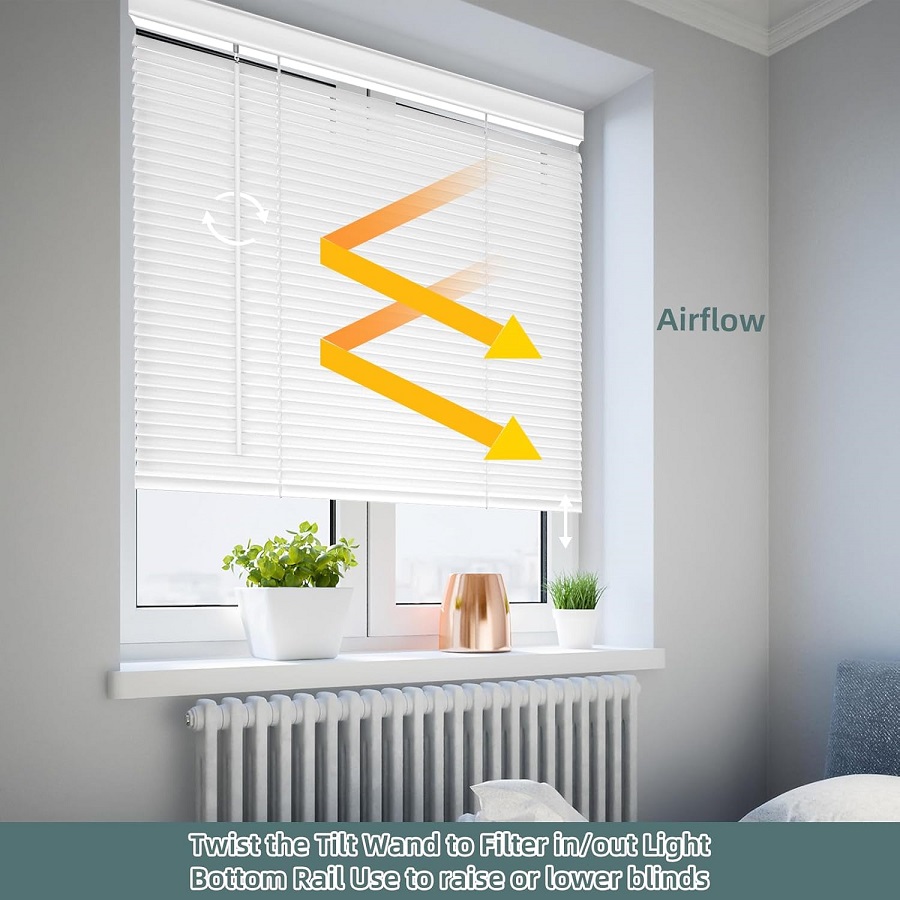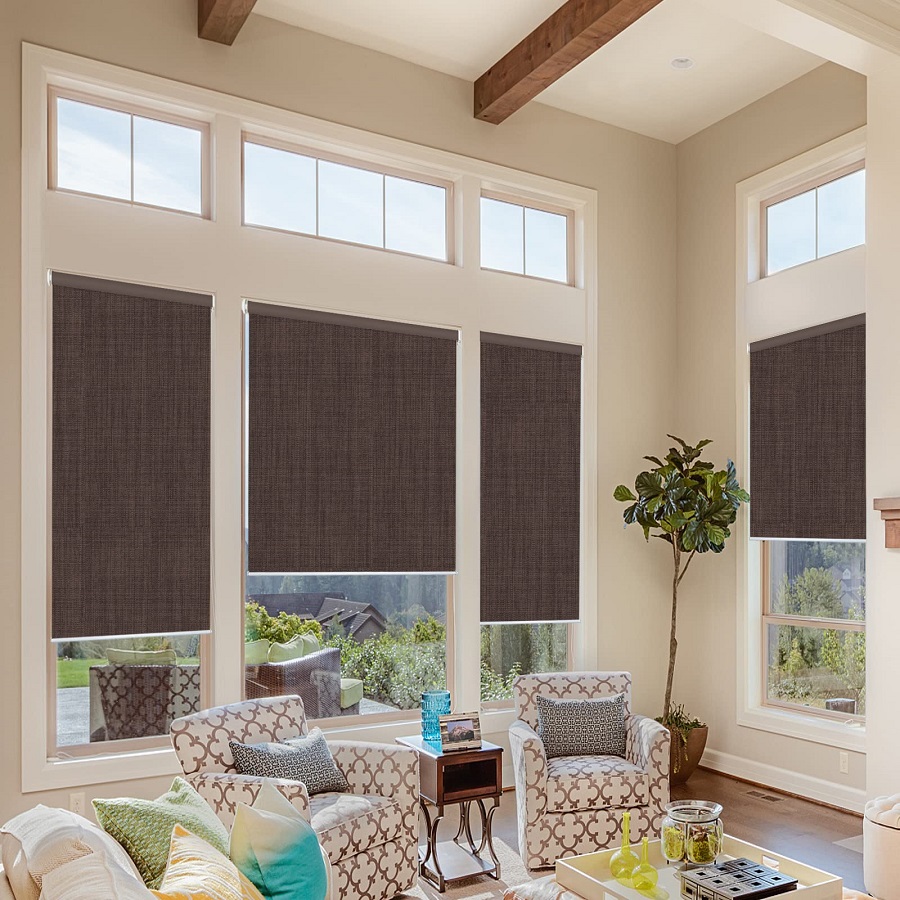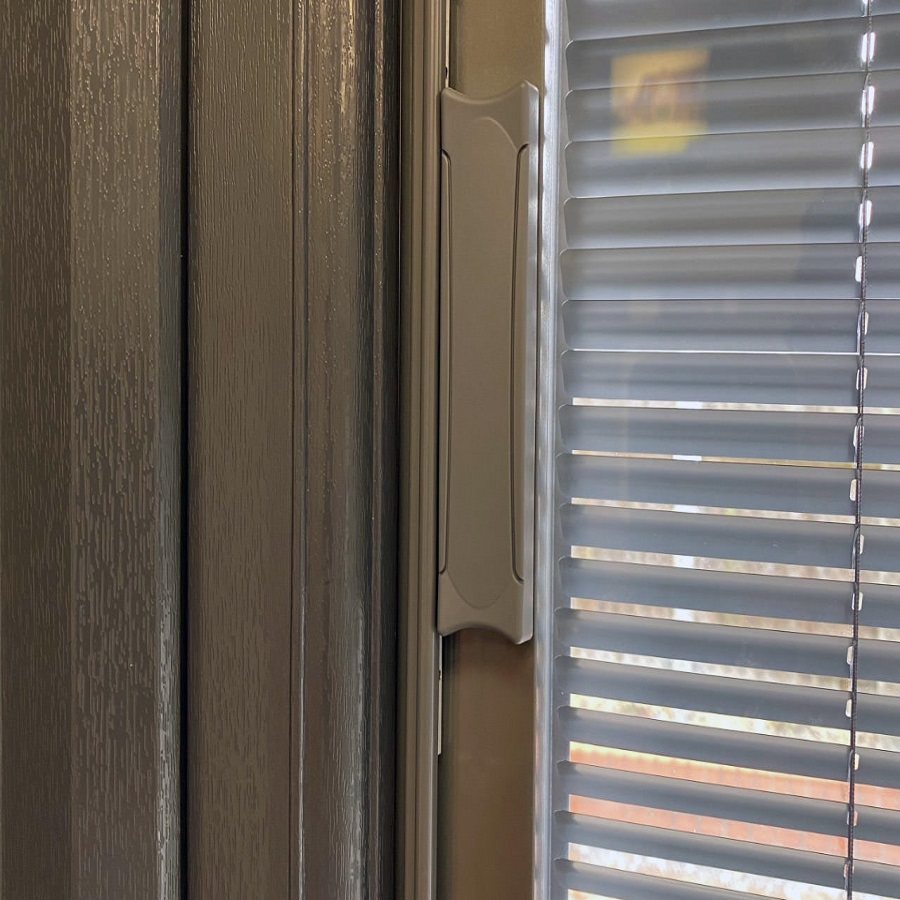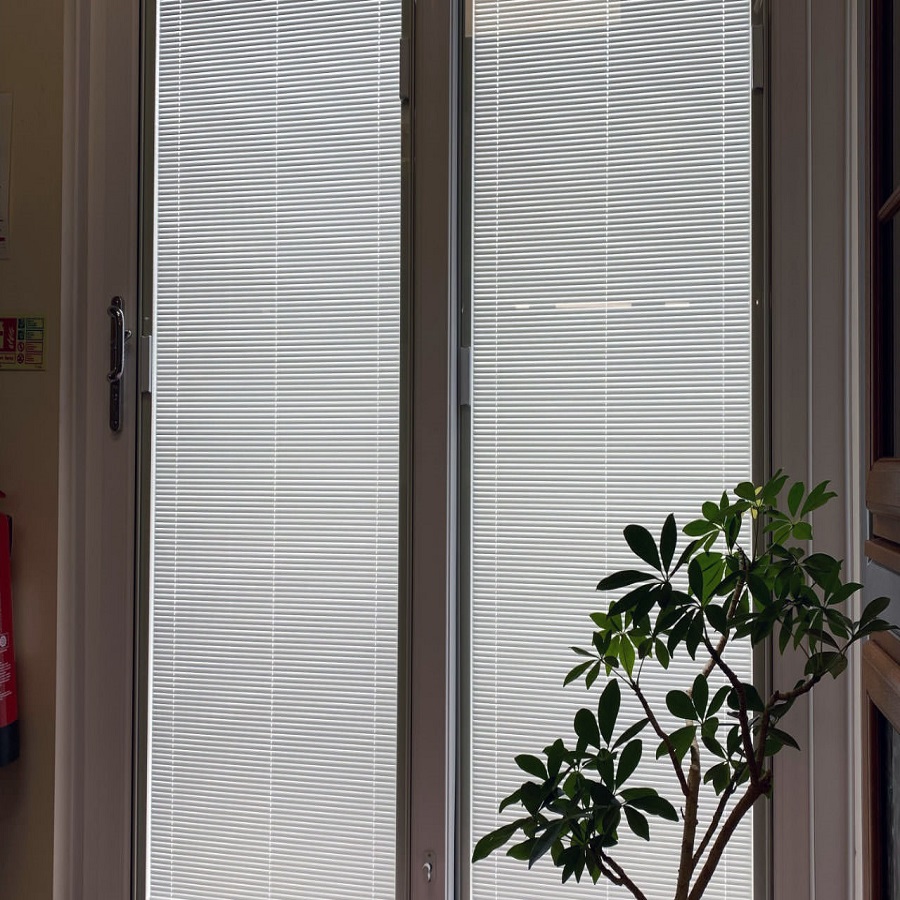What Are Windows with Blinds Inside?
Windows with blinds inside, also known as integral blinds, are a sleek solution for light control and privacy. These modern window treatments feature blinds or shades enclosed between glass panes. This design allows for a clean look, as there are no external cords or slats. Windows with built-in blinds simplify maintenance and enhance the overall aesthetic of a room. With blinds within the glass, there’s no need for frequent dusting or adjusting like traditional blinds require. Ideal for controlling the amount of sunlight that enters a room, they also serve as a barrier to maintain privacy while keeping the interior design uncluttered. Homeowners appreciate the convenience and improved safety that integral blinds provide, making them a popular choice for contemporary home designs.
How Built-In Blinds Operate
Magnetic Slider Controls
Built-in blinds use various control methods. One common way is through magnetic slider controls. This control is a discreet mechanism fitted on the window’s side. It’s easy to use: slide the control up to raise the blinds and down to lower them. For more precise light and privacy, tilt the slider. The magnetic track ensures smooth operation without tangling cords.
Motorized and Remote Systems
Another method is motorized and remote systems. These blinds work with the push of a button. You can adjust them from anywhere in the room. Some also sync with smartphone apps for even more ease. This technology allows for effortless control over your home’s light and privacy settings.
Built-in blinds offer a blend of convenience and style. Whether by magnetic slider or remote, operating these blinds is hassle-free. They fit well within modern homes, where clean lines and simplicity are key. With these innovative systems, adjusting light and privacy becomes a simple and safe task.

Advantages of Integrated Blinds
Modern homes are embracing the appeal of integrated blinds, often known as windows with blinds inside. The hidden charms of these innovative blinds bring a flow of benefits, making them a prized choice for many households. Here, we look closely at the key advantages they bring to the table.
Enhanced Privacy and Light Control
With integrated blinds, you gain fine control over light and privacy. Easily adjust blinds to let in sunlight or shield your home from prying eyes. The convenience of this feature provides a comfortable living experience, day or night.
Low Maintenance Requirements
Encased between glass, these blinds cut down cleaning time. Freed from dusting slats, homeowners find their upkeep simple. This not only saves effort but ensures blinds look like new for longer.
Increased Safety Features
In homes with small children and pets, cords from traditional blinds pose risks. Windows with blinds inside remove these hazards. Less worry about tangled cords means a safer space for everyone.
Disadvantages to Consider
While windows with blinds inside offer many benefits, they have downsides, too. It’s important to weigh these against the positives when choosing.
Limited Customization Options
Built-in blinds come with fewer style and color choices. Unlike traditional blinds, you can’t change them out easily when you redecorate. This can be restrictive if you want a specific look for your room.
Repair and Replacement Challenges
If built-in blinds break, fixing them can be hard. Often, you need to replace the whole window, which is costly. Finding someone skilled in repair can also be tough, leading to more hassle.
Impact on Energy Efficiency
These windows can be less efficient. They lack the gas between panes that normal energy-efficient windows have. This means more heat may enter in summer, raising your cooling bills. Upgrading to triple-pane glass can fix this, but it adds to the cost.
Higher Initial Investment
The cost of windows with blinds inside is higher upfront. This includes the price of the blinds and the special windows they need. The total cost may be outside of some budgets.
When looking at windows with blinds inside, consider these drawbacks. They might not suit every home or budget. But for many, the benefits like safety and low maintenance still make them a strong choice.

Windows with Blinds Inside: Manufacturers and Products
When choosing windows with blinds inside, it’s crucial to know the manufacturers and their products. Here’s what you should consider.
Top Manufacturers
Several reputable companies create windows with built-in blinds. Some of the leading names include:
- Andersen offers cordless blinds, suited for both windows and doors. They’re known for efficiency.
- Pella features snap-in blinds that you can change out. Their windows allow easy cleaning.
- ODL provides a variety of built-in blind designs. They have shades and blinds that move up and down or tilt.
- ProVia uses a gear drive system for no-slip blinds, available in different colors.
Product Features
The products from these manufacturers come with unique features:
- Customizable controls, such as magnetic sliders, remotes, or smart app connectivity.
- Safe designs that keep cords away, reducing risks for kids and pets.
- Maintenance ease, with some blinds sealed between glass needing no cleaning.
Considerations When Choosing
Keep in mind the product suitability for your home:
- Design options that match your decor.
- Energy efficiency if utility costs are a concern.
- Budget for the initial investment.
- Warranty offered by the manufacturer.
In summary, windows with blinds inside can be convenient, safe, and stylish. Research manufacturers carefully to find the right fit for your home. Consider design, efficiency, and cost.
Comparison with Traditional Window Treatments
When considering window coverings, traditional treatments like curtains and standard blinds are common choices. Let’s compare these with windows with blinds inside.
External vs. Internal Blinds
Traditional external blinds offer a vast array of styles and colors. They’re easy to switch out when you want a change. However, they need regular cleaning and can pose safety risks with dangling cords. Windows with blinds inside provide a sleek look, increase safety, and reduce cleaning time. But, they offer less style variety and can be tricky to repair.
Roller and Venetian Blinds Alternatives
Roller blinds are simple, effective, and easy to replace. Venetian blinds add classic style and light control. Both give more design freedom than built-in blinds. They also come in various materials and colors. But they don’t have the same clean lines as windows with blinds inside.
Evaluating Energy-Efficient Options
Energy-efficient window treatments save on heating and cooling costs. Traditional blinds with energy-efficient designs are available. But they might not match the sleekness or safety of integrated blinds. When choosing, think about the balance between energy savings and aesthetic.

Making the Right Choice: Factors to Consider
Choosing windows with blinds inside isn’t just about style. It’s a careful decision with various factors.
Your Home’s Aesthetic
Consider your home’s design. Will built-in blinds match your d??cor? Think about both now and future changes.
Maintenance and Cleaning
Think about cleanliness. Built-in blinds need less cleaning, a big plus for busy homeowners.
Safety Requirements
Do you have kids or pets? No cords on built-in blinds mean less risk.
Light and Privacy Control
How much light do you want? Built-in blinds offer easy adjustments, letting you control natural light.
Energy Efficiency
Are energy bills a worry? Remember, built-in blinds may impact how well your home stays cool or warm.
Budget Constraints
Know your budget. Built-in blinds can cost more upfront. Plan for this extra investment.
Ease of Use
Do you seek convenience? Consider if magnetic controls or motorized systems suit your lifestyle.
Long-Term Value
Think about the long run. Windows with blinds inside can be a lasting, stylish choice.
Assess these factors against what’s on offer. With thoughtful consideration, the right window treatments can serve you well.








